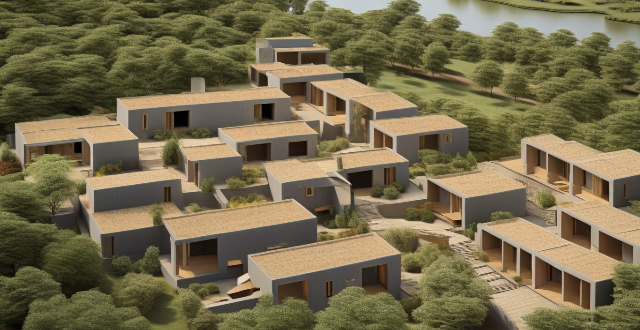Ecological design is a sustainable approach in architecture that focuses on minimizing the negative impact of buildings on the environment, incorporating natural elements into the built environment, emphasizing community integration, and considering long-term sustainability. It differs from traditional architectural practices which often prioritize aesthetics and functionality over environmental concerns.

Ecological Design vs Traditional Architectural Practices
Ecological design, often referred to as sustainable or green design, is a approach in architecture that focuses on reducing the negative impact of buildings on the environment. It differs significantly from traditional architectural practices in several ways.
Minimizing Environmental Impact
One of the primary differences between ecological design and traditional architectural practices is the emphasis on minimizing environmental impact. Ecological design seeks to reduce energy consumption, minimize waste, and use renewable resources wherever possible. This is in contrast to traditional architectural practices which often prioritize aesthetics and functionality over environmental concerns.
- Energy Efficiency: Ecological design emphasizes the use of energy-efficient technologies and materials. This includes things like solar panels, high-efficiency HVAC systems, and advanced insulation techniques.
- Resource Conservation: Ecological design also focuses on conserving resources by using recycled or recyclable materials whenever possible.
- Waste Reduction: Waste reduction is another key aspect of ecological design. This involves reducing construction waste and designing buildings that can be easily disassembled and recycled at the end of their life cycle.
Biophilic Design
Another difference between ecological design and traditional architectural practices is the concept of biophilic design. Biophilic design incorporates natural elements into the built environment to improve human well-being and foster a connection with nature.
- Natural Light: Ecological design often features large windows and skylights to maximize natural light.
- Indoor Plants: Incorporating indoor plants is another common feature of ecological design.
- Water Features: Water features such as fountains or small ponds are also used to create a more natural atmosphere.
Community Integration
Ecological design also places a greater emphasis on community integration than traditional architectural practices. This includes designing buildings that are accessible to all members of the community, regardless of age or physical ability, and incorporating public spaces that encourage social interaction.
- Accessibility: Ecological design often includes features such as ramps, elevators, and wider doorways to ensure accessibility for all.
- Public Spaces: Public spaces like parks, plazas, and community gardens are often incorporated into ecological design projects.
Long-Term Sustainability
Finally, ecological design takes a long-term view of sustainability that is not typically seen in traditional architectural practices. This includes designing buildings that can adapt to changing needs over time, as well as considering the impact of the building on future generations.
- Adaptability: Ecological design often includes flexible spaces that can be easily reconfigured as needs change.
- Future Generations: Ecological design considers the impact of the building on future generations, both in terms of resource consumption and potential legacy value.
In conclusion, while traditional architectural practices focus largely on form and function, ecological design takes a more holistic approach that considers the environmental, social, and economic impacts of buildings over their entire life cycle.